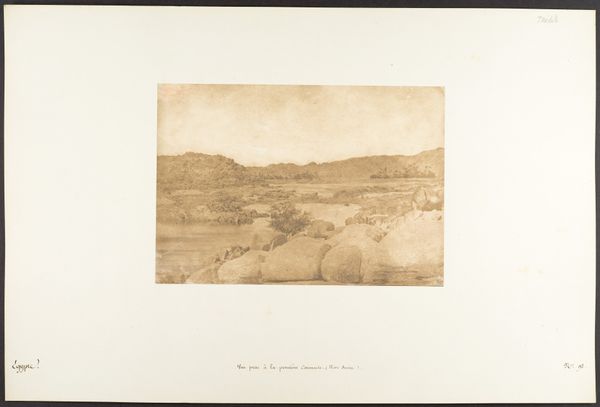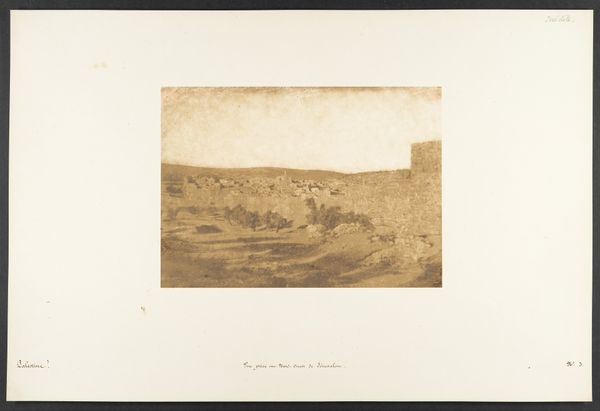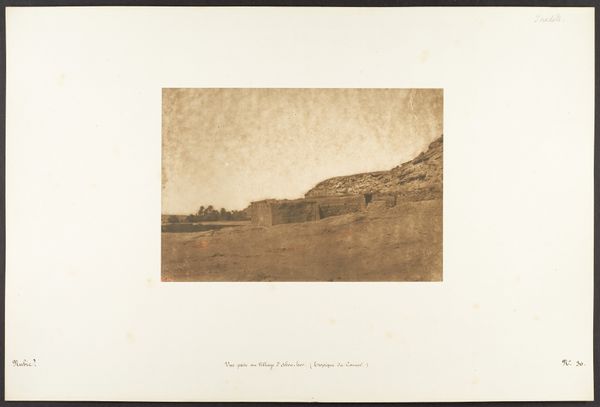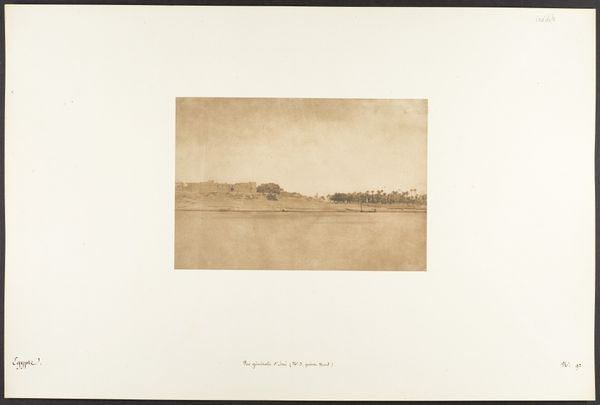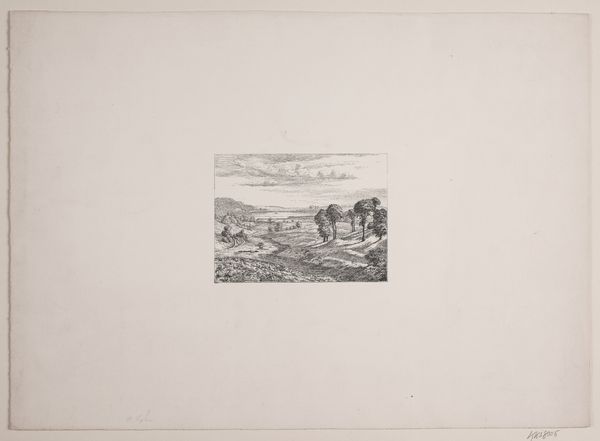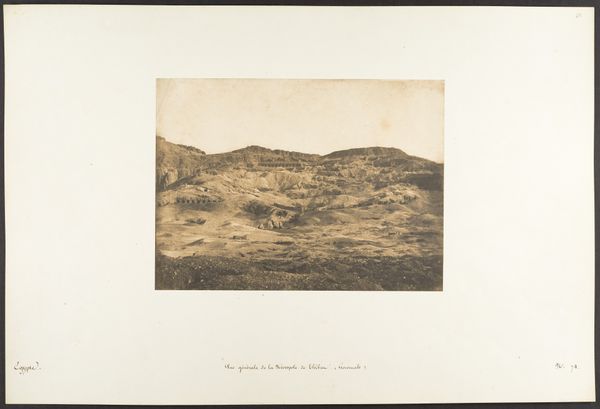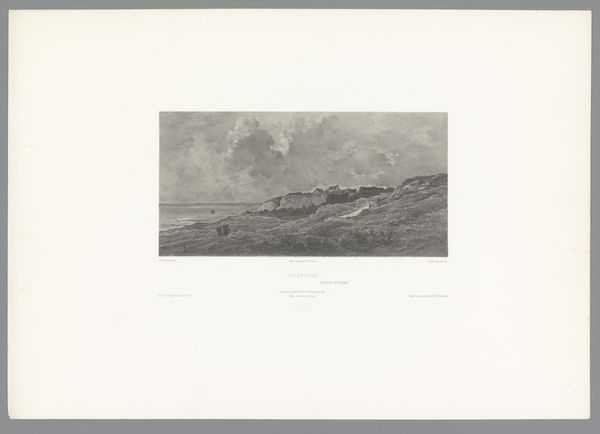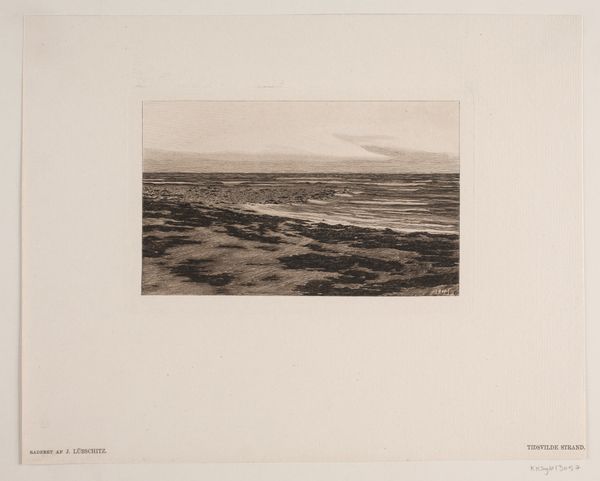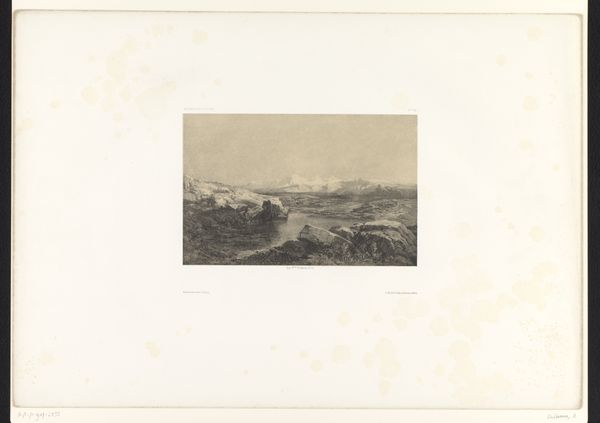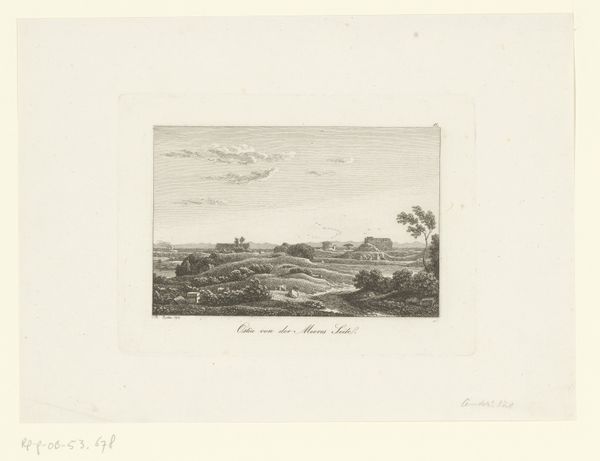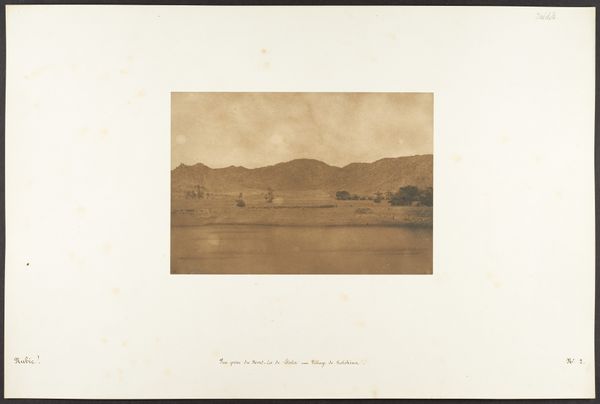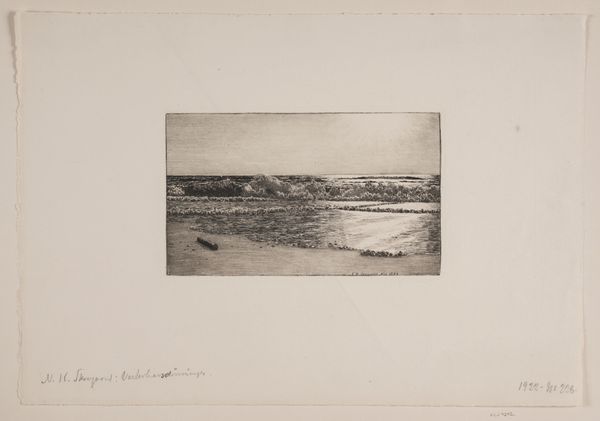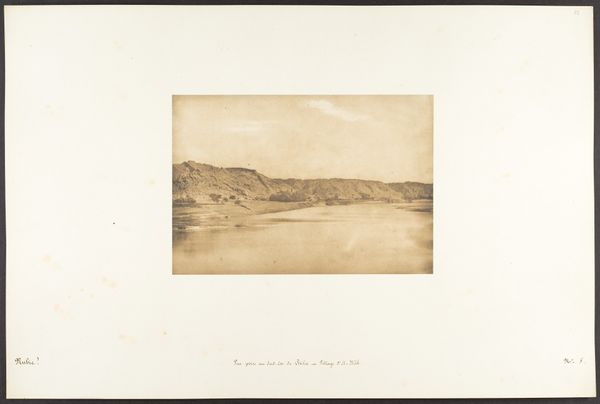
Vue de la première Cataracte, prise à l'Ouest, entre Assouan et Philae 1849 - 1850
0:00
0:00
photography, albumen-print
#
landscape
#
photography
#
romanticism
#
orientalism
#
albumen-print
#
realism
Dimensions: Image: 6 in. × 8 1/4 in. (15.2 × 21 cm) Mount: 12 5/16 × 18 11/16 in. (31.2 × 47.5 cm)
Copyright: Public Domain
Curator: Immediately striking! There's a quietness, an almost haunting stillness about this image. It draws you in with its delicate tonal range. Editor: This is “Vue de la première Cataracte, prise à l'Ouest, entre Assouan et Philae,” a work by Maxime Du Camp created between 1849 and 1850. He employed the albumen print technique. It is currently part of the Metropolitan Museum of Art's collection here in New York. Curator: The albumen print lends such a distinct quality to early photographs, doesn’t it? It’s that subtle sheen, combined with the sepia tones…makes the landscape feel both real and dreamlike, simultaneously. It's a world seen through a glass, darkly, yet preserved. What was Du Camp attempting to capture, politically or historically? Editor: Du Camp, part of a French archaeological expedition, aimed to document Egypt's landscapes and monuments. This photograph serves not only as visual documentation, but it reflects the Western gaze on the "Orient," quite aligned with Orientalist perspectives of the era. His expeditions and their representation afterwards helped create a romanticized idea about Egypt. The materiality reflects also the political landscape—French ambitions! Curator: Absolutely, one has to consider how these early photographic expeditions were funded and consumed within a European context hungry for images of exotic locales. But speaking purely technically, there's also something to be said about the labor involved, even with early photography—the transport of equipment, the processing…it was far from a simple snapshot. Editor: Precisely, and this touches on a fascinating paradox. The "objectivity" of the photographic process clashes directly with its inescapable status as a manufactured commodity consumed in specific social environments back in Europe. Also the reception it has, as being perceived "Real" while, in fact, they are posed, or the scenario has been organized before capturing the picture. Curator: It also speaks volumes about the assumed power dynamics inherent in who gets to represent whom. This image and others by Du Camp solidified certain perspectives of Egypt, influencing generations. Editor: And today, seeing it here, divorced from its original context in many ways, it compels us to critically assess that visual legacy. How do we navigate such beauty mixed with complex social implications? Curator: It's a layered process, and, hopefully, by examining not only its visual impact but also the intricate threads of its making and meaning, we can approach it more fully. Editor: I would say our conversation, right here, serves as a vital step to approach a complex picture, both literally and figuratively.
Comments
No comments
Be the first to comment and join the conversation on the ultimate creative platform.
